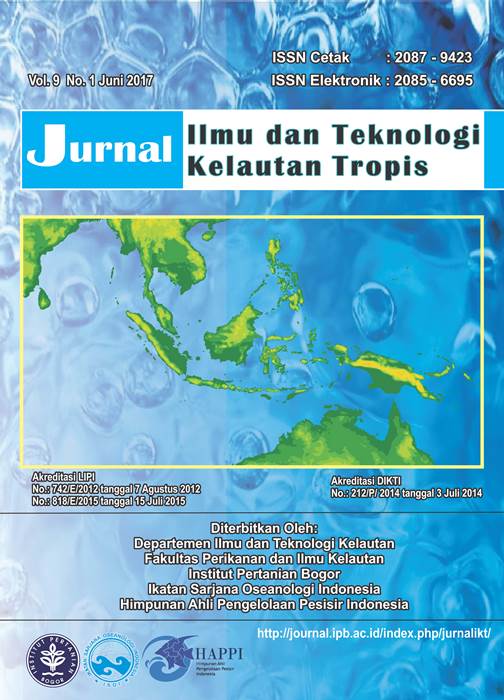WATER QUALITY OF POST CONTAMINATION OF MARINE DEBRIS IN THE KUTA BEACH OF BALI
Abstract
Kuta Beach of Bali is one of the top tourist destination for a vacation in Bali Island. The beauty of the beach with white sand, ocean waves are excellent for surfing, sunset, and tourism infrastructure which detailed makes very famous Kuta beach to foreign countries. However, in recent years the beauty of Kuta beach which has become an icon of tourism in Bali began plagued by high levels of contaminant of the marine debris on the beach, mainly contamination of the marine debris that often accumulate in Kuta beach every season West. The purpose of this study was to determine the condition of water quality based the quality standards of sea water KMNLH Number 51 Years 2004 post contamination of the marine debris that occurred in the Kuta beach of Bali. The method used is to perform measurements using a "Water Quality Checker" at 8 measuring stations. Water quality parameters which measured, namely physical parameters (temperature, turbidity) and chemical parameters (pH, salinity, DO). The results showed a temperature with the range of value 29.10-29.40°C, turbidity with the value range 0.30-18.70 NTU, pH with the value range 8.10-8.15 DO with the value range 6.85-7.38 mg/L and salinity with the value range 30.60-30.90%o. Based on the measurement data obtained indicates conditions of the waters chemistry of still suitable and condition of the waters physical showed the value of the temperature is still suitable, except the turbidity value shows the value does not suitable in the station 1, 2 and 8.
Keywords: Bali, water quality, Kuta Beach, marine debris
Authors
This work is licensed under a Creative Commons Attribution 4.0 International License.
Jurnal Ilmu dan Teknologi Kelautan Tropis i is an open-access journal, meaning that all content is freely available without charge to the user or their institution. Users are allowed to read, download, copy, distribute, print, search, or link to the full texts of the articles in this journal without needing to request prior permission from the publisher or the author.
All articles published by Jurnal Ilmu dan Teknologi Kelautan Tropis are licensed under the Creative Commons Attribution 4.0 International License. This allows for unrestricted use, distribution, and reproduction in any medium, provided proper credit is given to the original authors.
Authors submitting manuscripts should understand and agree that the copyright of published manuscripts is retained by the authors. Copyright encompasses the exclusive rights of authors to reproduce, distribute, and sell any part of the journal articles in all forms and media. Reproduction of any part of this journal, its storage in databases, and its transmission by any form or media is allowed without written permission from Jurnal Ilmu dan Teknologi Kelautan Tropis.


